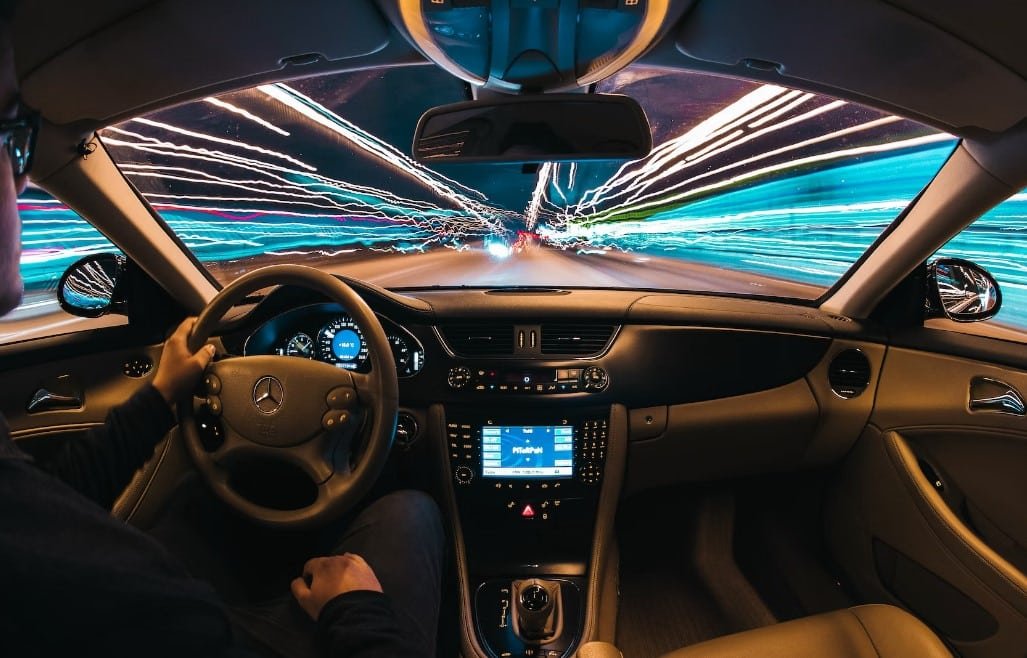Auto
Redefining In-Car Entertainment for Safer Journeys

In today’s fast-paced world, technology continues to revolutionize the way we live, work, and travel. Among the various domains touched by innovation, the automotive industry has seen a significant transformation, especially concerning in-car entertainment.
Safety remains a top priority, driving automakers and tech companies to prioritize safety while integrating entertainment into the driving experience. This emphasis has become a pivotal focal point in their endeavors to redefine in-car entertainment.
The evolution of in-car entertainment systems, from rudimentary radios to sophisticated multimedia hubs, has now entered a new era towards safer driving experiences.
The Evolution of In-Car Entertainment
Decades ago, car radios marked the initial foray into in-car entertainment. Over time, cassette players, CD changers, and MP3 players became common, providing drivers and passengers with road-worthy music enjoyment.
Despite their popularity, these systems often required manual operation, posing a distraction from the primary task of driving.
Forbes reports that approximately 3,000 lives are lost each year due to car accidents caused by distracted driving. These incidents account for 8% to 9% of all fatal motor vehicle collisions in the United States. This underscores the risks associated with diverting attention from the road.
Later, the emergence of touchscreen interfaces and voice commands, such as those seen in Apple CarPlay radio, ushered in a new era of in-car entertainment. Integrated infotainment systems introduced navigation, music streaming, hands-free calling, and even internet connectivity, elevating the driving experience.
Yet, concerns regarding distraction persisted, prompting a shift towards innovation aimed at enhancing entertainment without compromising safety.
Safety at the Forefront: Innovations in In-Car Entertainment
Safety has emerged as a pivotal concern in the evolution of in-car entertainment systems. Innovations at the forefront of this domain are reshaping how we engage with entertainment on the road. Simultaneously, these advancements prioritize the safety of both drivers and passengers.
Boss Audio Systems notes that the integration of cutting-edge technologies aims to revolutionize in-car entertainment while ensuring that safety remains paramount.
Voice-Activated Controls and AI Integration
The integration of advanced voice recognition systems stands out as a pioneering innovation for safer in-car entertainment. AI-powered assistants like Amazon’s Alexa, Apple’s Siri, or Google Assistant empower drivers to engage with their vehicles without diverting their attention from the road.
Studies indicate significantly lower levels of driver distraction when using voice commands. This technology enables seamless control over various functions, including adjusting music playlists, accessing navigation, or managing smart home devices while on the move.
According to a report by Voicebot.ai in January 2020, 63% of drivers consider the presence of an in-car assistant when shopping for a vehicle. This statistic underscores the increasing significance of this technology within the automotive industry.
Gesture and Eye-Tracking Technology
Recent advancements in gesture and eye-tracking technology have been instrumental in creating safer entertainment experiences. Gesture control systems enable drivers to interact with infotainment features through simple hand movements, reducing the need to touch screens or buttons.
Additionally, eye-tracking technology monitors driver attention and adjusts entertainment content or alerts based on the driver’s gaze, ensuring they remain focused on the road.
A recent report from Springer Link underscores that mid-air gesture interfaces present a promising alternative for safer in-vehicle interaction. They offer an effective solution compared to traditional touch-based or voice control systems, notably reducing driver distraction.
These contactless interfaces, relying on computer vision recognition, show the potential to enhance user interaction without compromising driving safety. However, their effectiveness relies on understanding user preferences, achievable through elicitation studies.
To ensure optimal functionality, accurate gesture recognition rates are vital. Vision-based recognition systems, such as U-Net convolutional neural networks, provide a promising solution for precise gesture segmentation, overcoming challenges related to interference and illumination.
These advancements aim to create more intuitive and safer in-vehicle interaction, emphasizing user-centric design and robust gesture recognition algorithms.
Augmented Reality (AR) Head-Up Displays (HUDs)
AR-based Head-Up Displays (HUDs) revolutionize the driving experience by projecting vital information onto the windshield, including navigation directions, speed, and essential safety warnings. This overlay directly within the driver’s line of sight ensures crucial data is accessible without causing distractions.
Additionally, integrating entertainment features, such as augmented reality games or immersive experiences for passengers, enhances the driving journey. This is achieved without obstructing the driver’s view, thus prioritizing safety.
According to Fortune Business Insights, the Automotive Augmented Reality market in North America is anticipated to undergo substantial growth. Projections indicate it could reach a size of 14.44 billion USD by 2028, highlighting an impressive Compound Annual Growth Rate (CAGR) of 18.1%.
This forecast illustrates the significant traction and expected expansion of AR technology within the automotive sector.
Challenges and Future Directions
Despite these strides, challenges persist in refining in-car entertainment for safer drives. Balancing entertainment with safety remains a delicate task, requiring continual innovation and stringent safety protocols. Cybersecurity threats also pose a risk as cars become more connected, necessitating robust measures to safeguard against potential breaches.
Looking ahead, the future of in-car entertainment innovation is promising. Integrating biometric sensors to monitor driver fatigue or stress levels and employing AI-driven predictive analytics to anticipate user preferences are among the anticipated developments.
Furthermore, the advent of autonomous vehicles could revolutionize in-car entertainment, allowing passengers to engage in immersive experiences without the need for active driving.
Conclusion
In-car entertainment has come a long way, transitioning from basic audio systems to sophisticated, safety-focused multimedia experiences. The ongoing innovation in this sector continues to prioritize safety while enhancing the driving journey for all occupants.
As technology continues to advance and consumer demands undergo a transformation, the integration of entertainment into cars is poised to redefine how we perceive travel. This evolution ensures that the road ahead is not only enjoyable but also prioritizes safety for all occupants.
-

 Social Media2 months ago
Social Media2 months agoWhat the “67” TikTok Meme Really Means
-

 Business2 months ago
Business2 months agoDubai Freezone Company Formation: From Name Reservation to Bank Account
-

 Tech2 months ago
Tech2 months agoWhat To Do When Your Business Faces Network Vulnerabilities
-

 Auto2 months ago
Auto2 months agoHow to Compare Car Insurance Plans for Maximum Savings






